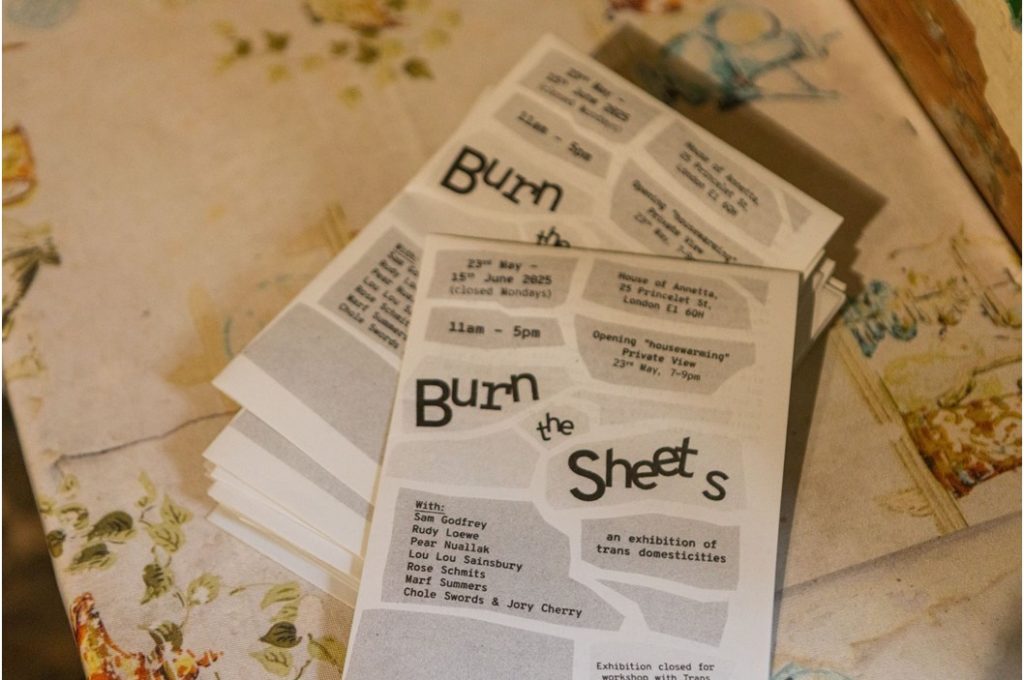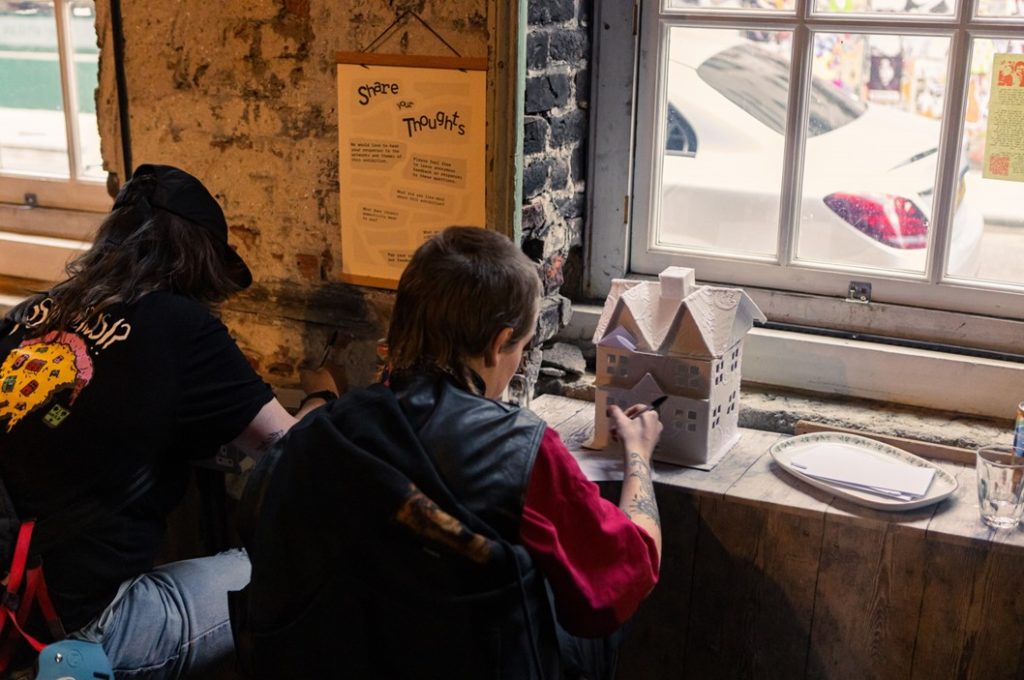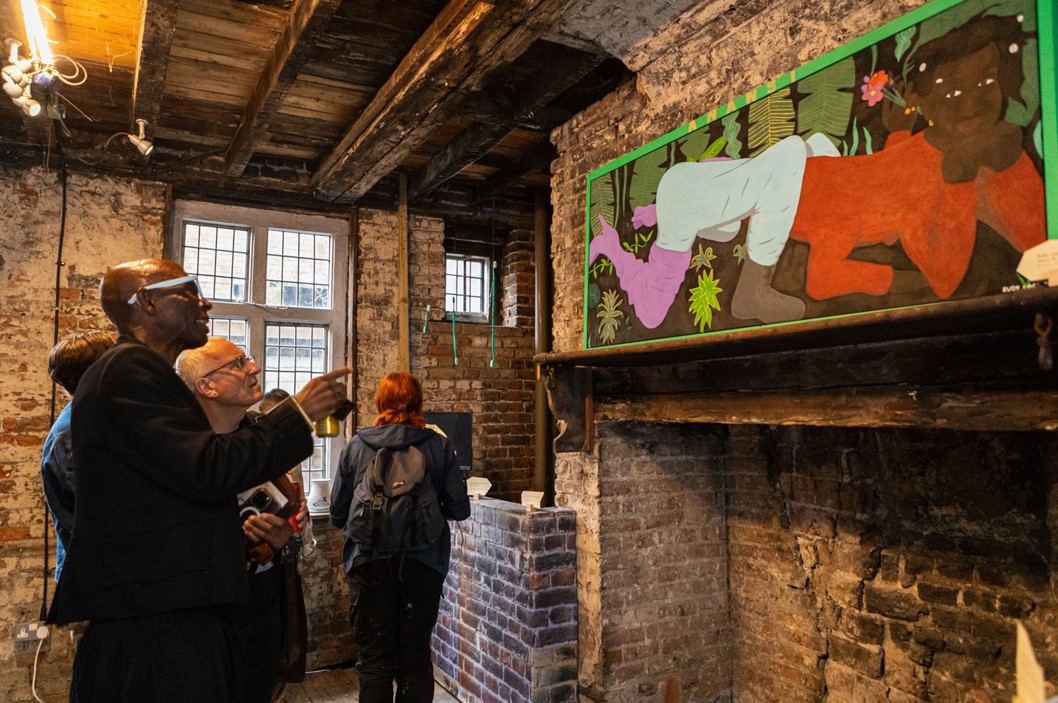Sam Godfrey talks to us about their recent use of Engaged Participatory Research Funding to support a successful art exhibition with partners, House of Annetta. Through publicly showcased art, this project explored issues around domestic security and housing inequality for trans communities.
Amount of award: £5000
Sitting across the fields of artistic research, visual culture, and gender and sexuality studies, this project was an art exhibition titled “Burn the Sheets: an exhibition of trans domesticities”. This ran for 3 weeks at the House of Annetta, a community space and venue in Spitalfields, London. Through this interdisciplinary project, I aimed to create an exhibition and community opportunities that addressed trans domesticity and LGBTQIA+ housing justice.

For the exhibition itself, eight artists used a range of predominantly craft and textile artworks to explore the idea of what ‘trans domesticity’ might mean. We also ran two artist-led tours of the exhibition, to further develop engagement with these pieces and the ideas behind them. Alongside this, I co-organised a zine-making workshop with the youth advocacy group, Trans Kids Deserve Better, to make a zine resource on how to support trans youth in the home.
We engaged with a varied audience, ranging from local residents, to tour groups, to existing fans of the artists’ work; welcoming more than 1000 visitors over the course of three weeks. Throughout the project, our aim was to connect with trans people and with an audience who might not be familiar with housing issues affecting the LGBTQIA+ community. By working with House of Annetta, we could then offer our audience access to future support and resources, as part of their ongoing work into housing, land and spatial justice.
Collaboration with other trans artists, as well as the processes of curating, installing, and presenting my own artwork have greatly benefitted my PhD research methodology. This project has also given me the opportunity to develop my leadership skills within the sector, as well as developing new relationships with artists, researchers, and cultural sector staff.
Visitors also highlighted a range of benefits from the exhibition, including:
- How the space allowed visitors to consider what they wanted/needed for safer and more stable living spaces
- How the artworks prompted new understanding of specific housing issues experienced by the LGBTQIA+ community
- The importance of seeing trans art that discusses issues of housing and domesticity during a particularly hostile period for trans people (with specific personal references to the damaging impact of the recent EHRC guidelines on which public spaces trans people can and cannot access)
By creating a toolkit and resource for trans youth that can be accessed online and physically, the project hopes to benefit a wider audience of organisations, families and young trans people who would find this helpful in articulating their needs.
This also provided a paid exhibition opportunity for the artists involved, providing reach to new audiences through online press reviews. Some artists have since been offered further opportunities after their work was seen by other curators and cultural professionals. Similarly, the exhibition supported the site itself, welcoming new visitors to the House of Annetta who were interested in renting the space for events. The venue’s organising team will also use our exhibition, evaluation and impact report as part of their future funding applications, to continue building their reach.
There were some challenges to the project itself, particularly several proposed collaborations falling through due to budget cuts in partner organisations. However, these issues only highlight the precarious nature of frontline housing support, and the stretched resources of those working to improve LGBTQIA+ housing justice.

The relationships we did build worked well, leading to unexpected positive outcomes, such as press reviews and collaborative projects, and I would be keen to build upon this in future projects.
I am currently looking to apply for funding from the Paul Mellon Centre, and am following up on possible collaboration opportunities with organisations such as Decorating Dissidence, and the Schwules Museum in Berlin. Following the success and interest in this exhibition, I hope to continue building on this work, and taking the project to new audiences.
Photo credits: Connor Pope Photography

